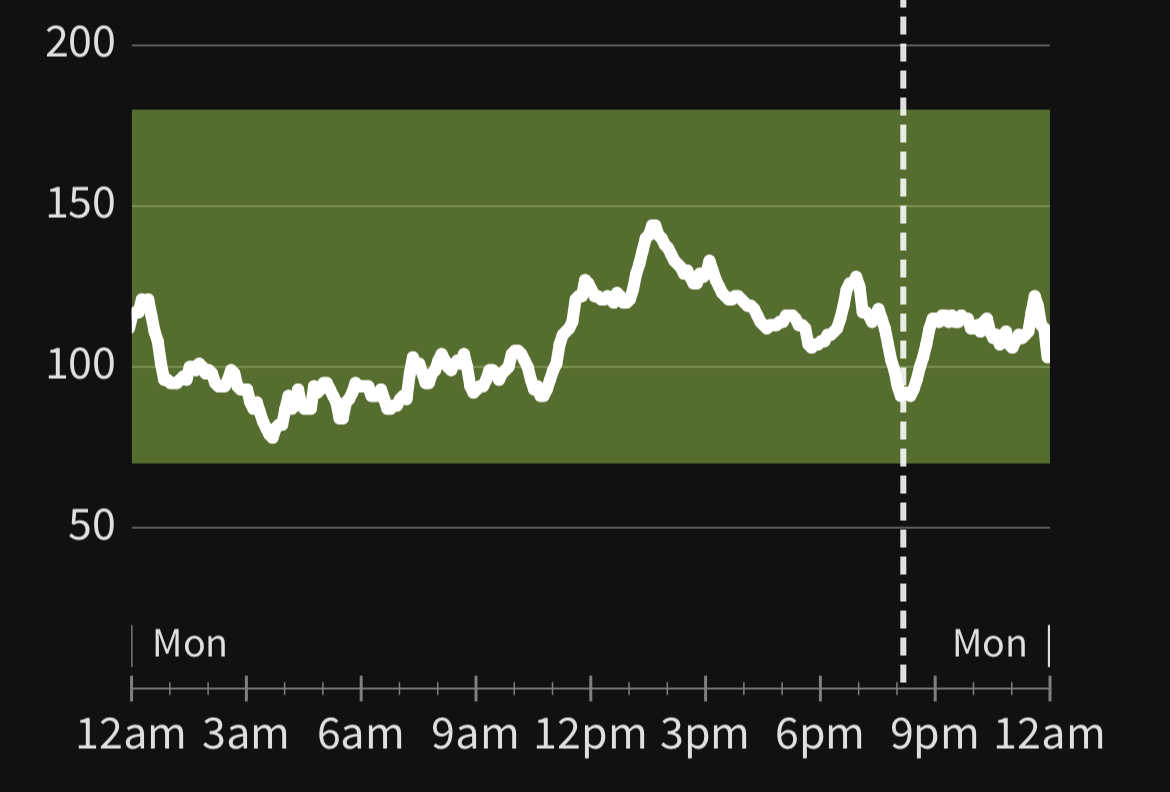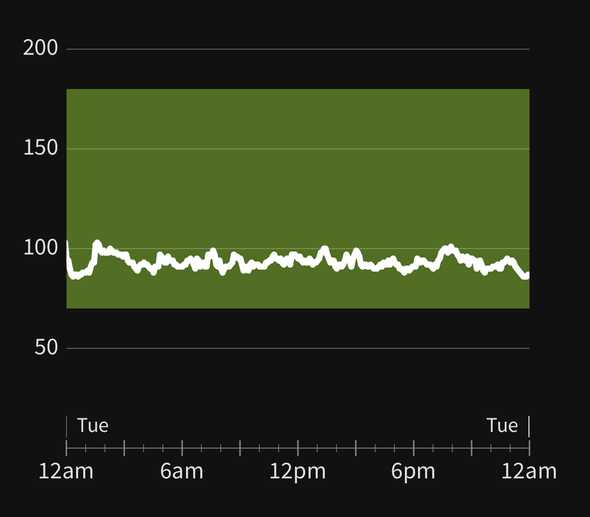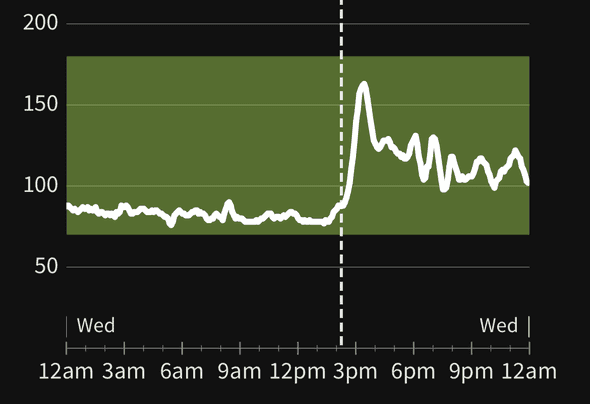Glucose Monitoring Self-Study
April 05, 2023
A little background
A friend who is a bit of a biohacking nerd mentioned to me that he had a “hookup” for off-prescription continuous glucose monitors. I’m not quite sure what that meant, but I think some kind of middle-man in Germany was involved. In any case, this sounded like an invitation to do some self-experimentation so next time we hung out I handed him some cash and he handed me a small box containing a Freestyle Libre 3.
I’m generally in good health, and have no issues controlling my blood sugar. My main interest was just to understand my body a bit better: I knew at a high level that there’s a relationship between the food I eat, glucose levels, and my energy and mood, but I didn’t know much about the specifics of those relationships. If my glucose is very high or very low, what does that subjectively feel like? Can I make choices in how I eat to avoid “sugar crashes” or “hangry-ness”?
Experiments and observations
I wore the monitor for two weeks and tried to keep track of my food and activities so I could correlate them back to the glucose levels in the Freestyle Libre app.
My glucose levels reacted predictably to the types of food I was eating. Carb-y meals like oatmeal would result in big glucose spikes and keto-friendly meals like scrambled eggs wouldn’t move the graph much. Watching my blood sugar respond in realtime was a big reminder of how much sugar is in alcoholic drinks. I might start thinking twice about throwing back rounds of margaritas on a Friday night. My best “high score” on the glucose monitor was after eating a big bowl of cereal, and was just shy of the 180mg/dL which is the top of the recommended range in the app I was using.
I never noticed any subjective effects when I had big high blood sugar spikes like this. I expected to maybe link that to a crash or tiredness, but that wasn’t the case. Perhaps with a well-functioning insulin response, I don’t get those levels high enough for long enough for it to feel like anything. This same day in the graph above, you can see a big drop in early morning hours, almost to 50mg/dL which is outside of the normal range. I saw this happen on a few days, where my glucose levels dropped very low in the few hours before I woke up in the morning; according to some light internet research “nocturnal hypoglycemia” is a thing, and can cause poor sleep quality (I didn’t particularly notice being poorly rested on those mornings though).
Exercise was another area where I was curious to observe some causes and effects. Would working out drive my blood sugar lower as it’s consumed by my body? For the most part, no. Going on a five mile run didn’t have any noticeable impact. Doing crossfit seemed to actually increase the levels—apparently high intensity exercise can trigger an adrenaline response that releases sugars so that energy is ready and available for the muscles. It turns out the body is pretty good at converting stored glycogen to glucose and maintaining homeostasis!
The one time I was able to see my glucose levels driven down from exercise was on a 2h45m mountain bike ride, while intentionally avoiding any mid-ride snacks so I could maximally drain my sugar stores. Things were holding steady until about two hours in, then my levels started to rapidly drop. This aligned with a corresponding drop in my energy and spirits; for the last twenty minutes or so of the ride, I was extremely ready for the ride to be over.
I was starting to bonk! This is what bonking feels like! I’ve had that “hitting a wall” feeling before on very long bike rides or runs before, but hadn’t entirely put together what that feeling meant until seeing this glucose monitor readout. I had always figured that, sure, at the end of long effort you might get super extra tired, but hadn’t connected that to my generally cavalier attitude towards sports nutrition and that the feeling was my quick-release glycogen starting to get exhausted.
The last experiment I did was a 48 hour water-and-salt-only fast. I’ve done 24 and 48 hour fasts before, and found them strangely fun: after a while you develop this clear-headed, light mood, and the constant companion of hunger is a sort of extended mindfulness exercise. Anyways, this is what happened. The dotted lines in these graphs mark the start and end of the fast.
After the first night, glucose levels remained stable and low. During the second night and into the third day, levels started to gradually trend even lower, and by the afternoon I was starting to feel pretty drained and like it was hard to focus. I had some work I was trying to do and it was hard to make progress on in this state, so I decided to break the fast a few hours early with a big bowl of rice. It felt so good to be eating carbs, and I quickly felt my brain return back to normal.
So, did I learn anything?
Wearing the continuous glucose monitor on my arm was kinda fun, getting to see this graph move up and down in realtime and whatnot. In terms of actually useful learnings, I’d summarize it as:
- Cocktails have, like, a lot of sugar in them.
- If I’m exercising for more than an hour, I should take refueling seriously and bring some sports gels or other fast carbs.
- Low glucose states aren’t that easy for me to get into, but now I know subjectively what it feels like.




